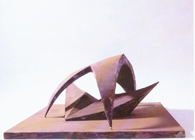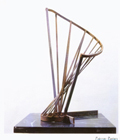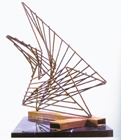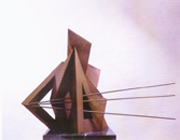Plastic
Arts in NTUA
By George Kalakallas
|
Plastic |
Arts in NTUA By George Kalakallas |
|
Sculpture in the Round and Architectural Space In the subject the methods are analyzed and the conclusions as well the experience are utilized as regards the installation of a sculpture in the round in an open-air space and a free natural environment. During the installation study a particular effort is made for the thorough understanding of the harmonic relation between the sculpture in the round and its environment, so that the inhabitants of the town/ city could get a correct concept of plastic modeling. Finally, the relation man -sculpture- space ( an indicative reference to Modulor's climax) obtains a special importance for the education of students and the completion of subject. |
     |
|
Cylider The subject of this exercise aims at the development of the students
initiative and their compositional and modeling ability. |
|
Concentration - Elevation -Dissemination Concentration: it frames substance, thought, idea, and mass. The ensemble
contains the motion in inertia and when it acquires power it emerges and
evolves freely in space and time.
|
|
Door - knocker It is the device, which, through the sound it produces, defines the intention
of going from the open or public space to the exclusive private and visually
isolated inner space of the house.
|
t